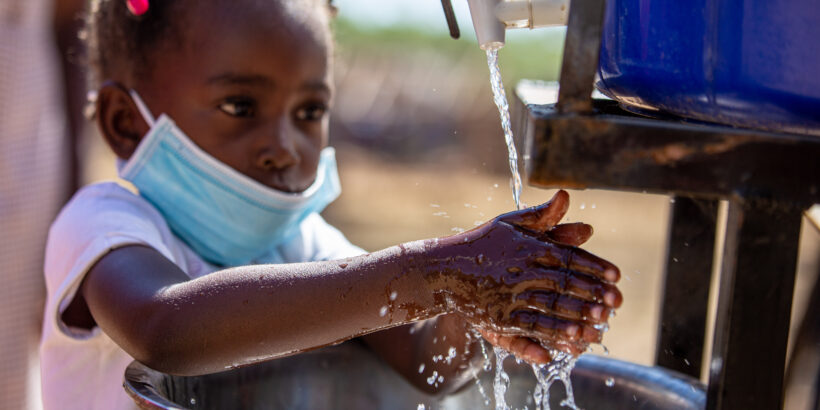Safe water, sanitation, and hygiene (WASH) interventions are critical to preventing the spread of typhoid. Typhoid is spread via the fecal-oral route when bacteria pass into people’s mouths through food, water, hands, or objects contaminated with fecal matter. Solutions such as water treatment or filtration, installation and management of toilets and sanitation systems, and education about proper handwashing and food-handling practices can save lives and protect people from typhoid infection.
Safely managed water and sanitation
Globally, 2 billion people lack access to safely managed drinking water services and 3.5 billion people lack access to safely managed sanitation services (e.g., toilets). These communities are at higher risk for typhoid and other waterborne diseases such as diarrheal infections, polio, and hepatitis A. By safely separating waste from water sources used for drinking, cooking, washing, cleaning, or swimming, and ensuring that water is treated and free of contamination, we can help prevent the spread of typhoid along with many other diseases.
Recent typhoid outbreaks in Zimbabwe have been associated with contaminated boreholes and shallow wells dispensing contaminated water.
Proper hygiene
Because the bacteria that cause typhoid can spread from fecal matter to hands and get into food, proper food-handling and hygiene practices—including handwashing with soap and water at key times, and boiling or treating food and beverages—are important in the prevention of typhoid. In Kampala, Uganda, for example, contaminated water and passion fruit juice sold in public markets caused a large typhoid outbreak in 2015. The government helped stop the outbreak through water treatment products and education about avoiding untreated beverages. Unfortunately, 2 billion people lack basic handwashing facilities, raising their risk of typhoid infection.
An integrated solution
WASH interventions are a key part of the integrated package of solutions required to take on typhoid, but no one intervention can solve the problem alone. Given the significant burden of typhoid among hard-to-reach, high-risk populations where WASH progress may be slow, the role of preventive vaccines alongside WASH interventions becomes even more critical. While improved WASH infrastructure is the ideal long-term solution, it takes capital investment and long-term implementation. Vaccines can help protect children now while progress is made with WASH.
Photo: TyVAC/Kudzai Tinago.



